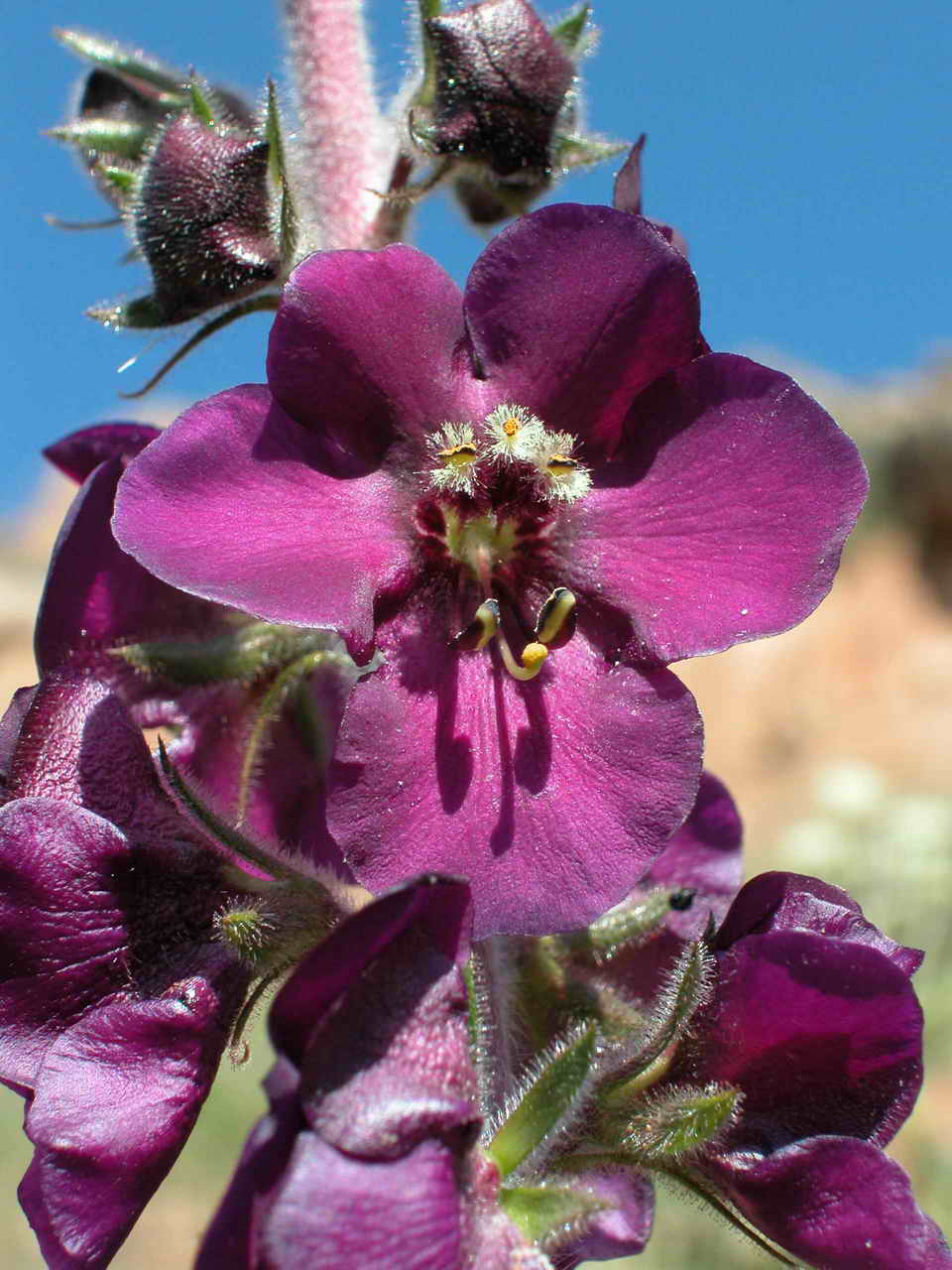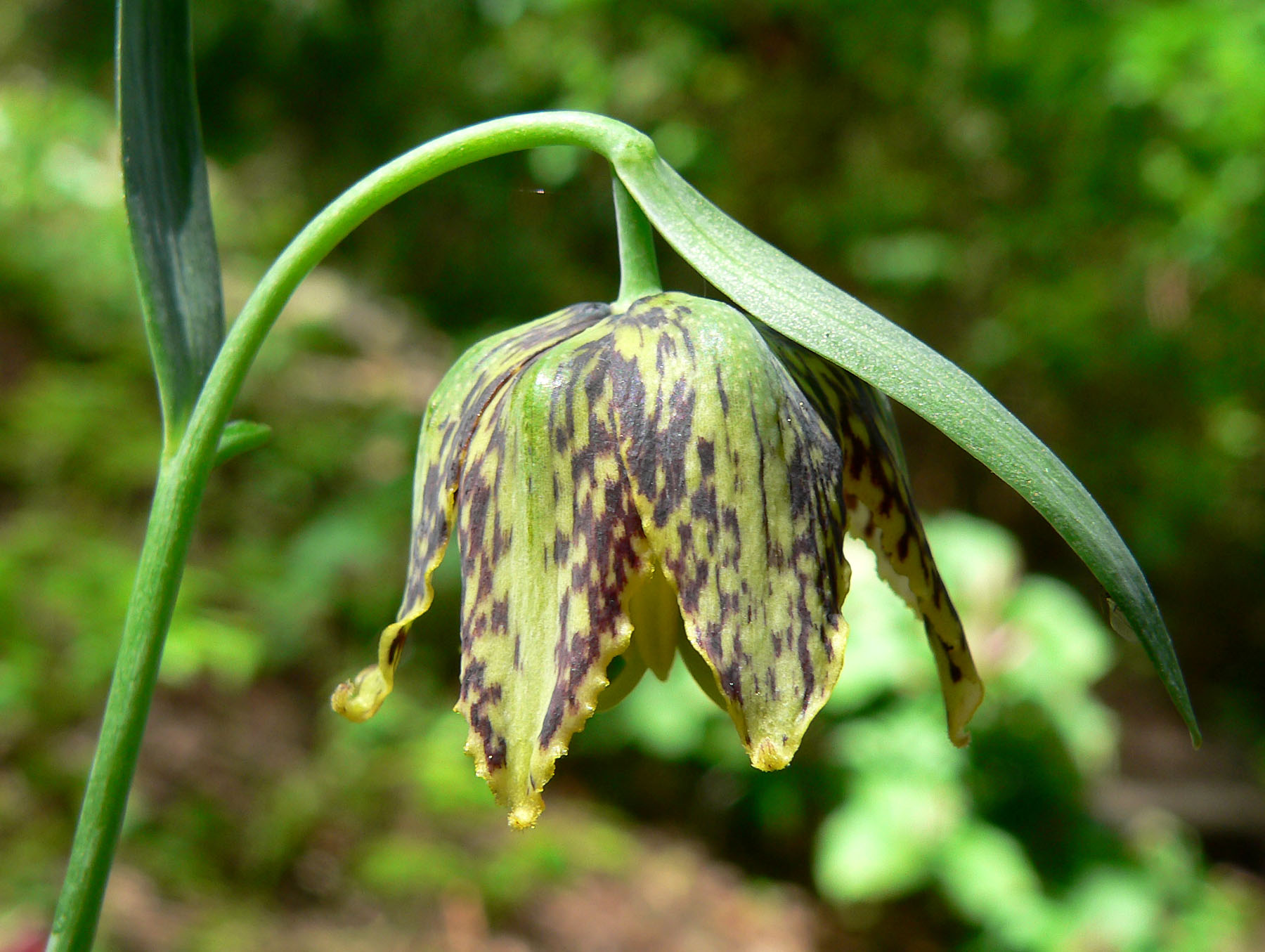|
Fritillaria Uva-vulpis
''Fritillaria uva-vulpis'', commonly called the fox's grape fritillary, is a bulbous perennial plant belonging to the genus '' Fritillaria'' and native to eastern Turkey, north-western Iraq and western Iran."Botanica. The Illustrated AZ of over 10000 garden plants and how to cultivate them", p. 384. Könemann, 2004. They are mainly found in the wooded foothills of the Zagros, where they grow in damp meadows Alpine Garden Society, The bulbous plants of Turkey and Iran. Pershore 2007, 121 and cornfields between 900 and 1800 m above sea level.Anna Pavord, Bulb. London, Mitchell Beazley 2009, 222 Name The Latin name means "fox’s grape", and was coined in Kew after their Kurdish name ''tarsi raiwi'', recorded by Guest. The botanist Guest collected this plant in north-eastern Iraq in 1931 and brought it to Kew. Studies by Rix showed that this collection consisted of a mix of ''Fritillaria assyriaca'' and ''Fritillaria uva-vulpis''. The plant was first described by Chris ... [...More Info...] [...Related Items...] OR: [Wikipedia] [Google] [Baidu] |
Martyn Rix
Edward Martyn Rix (born 15 August 1943) is a British botanist, collector, horticulturalist and author. Following completion of a PhD on ''Fritillaria'' at Cambridge University, he worked in Zurich, Switzerland and at the Royal Horticultural Society gardens at Wisley. He is the author of many books and articles on plants and horticulture and is the editor of Curtis's Botanical Magazine, based at the Royal Botanic Gardens, Kew in London. Life Born on 15 August 1943 to Edward Lionel Reusner and Elizabeth (Joyce) Rix, Martyn Rix was educated at Trinity College Dublin (MA), and Corpus Christi College, Cambridge University, where he received his PhD at biology school in 1971 for his dissertation on ''Fritillaria'' in Greece and Turkey (partially published as ). He married Alison Jane Goatcher in 1983, with whom he frequently collaborates, and they have two daughters. Work Following completion of his doctorate he worked as a fellow at the Institute of Systematic Botany, Uni ... [...More Info...] [...Related Items...] OR: [Wikipedia] [Google] [Baidu] |
Haji Omran
Haji Omeran ( ku, حاجی ئۆمەران ,Hacî Omeran; ar, حاج عمران), is a town located in Iraqi Kurdistan's Arbil province near the Iran–Iraq border. It is 180 kilometers northeast of the Arbil and 20 kilometers east of the Choman. See also * Operation Dawn 2 *Operation Karbala-7 * Iraqi chemical weapons program References External links Iraq-businessnewsHaji Omran: Iraq(Source questionable as it falsely claims that it's in As Sulaymānīyah, but the coordinate is clearly farther north, in Arbīl Erbil, also called Hawler (, ar, أربيل, Arbīl; syr, ܐܲܪܒܹܝܠ, Arbel), is the capital and most populated city in the Kurdistan Region of Iraq. It lies in the Erbil Governorate. It has an estimated population of around 1,600,000. ...) Hawlergov(Arabic language) Populated places in Erbil Governorate {{Kurdistan-geo-stub ... [...More Info...] [...Related Items...] OR: [Wikipedia] [Google] [Baidu] |
Flora Of Turkey
about 9300 species of vascular plant were known to grow in Turkey. By comparison, Europe as a whole contains only about 24% more species (about 11500), despite having thirteen times the area. The most important reasons for the high plant biodiversity are believed to be the relatively high proportion of endemics, together with the high variety of soils and climate of Turkey. Endemism A third of Turkish plant species are endemic to Turkey: one reason there are so many is because the surface of Anatolia is both mountainous and quite fragmented. In fact, the Anatolian mountains resemble archipelagos like the famous Galapagos Islands. Since Darwin we know that geographic isolation between islands or separated mountains is an important means of speciation, leading to high spatial diversity. For Anatolia this assumption is confirmed by concentrations of endemism on highly isolated and relatively old massifs such as Uludağ and Ilgaz Dağ, whereas very young volcanic cones such ... [...More Info...] [...Related Items...] OR: [Wikipedia] [Google] [Baidu] |
Plants Described In 1974
Plants are predominantly photosynthetic eukaryotes of the kingdom Plantae. Historically, the plant kingdom encompassed all living things that were not animals, and included algae and fungi; however, all current definitions of Plantae exclude the fungi and some algae, as well as the prokaryotes (the archaea and bacteria). By one definition, plants form the clade Viridiplantae (Latin name for "green plants") which is sister of the Glaucophyta, and consists of the green algae and Embryophyta (land plants). The latter includes the flowering plants, conifers and other gymnosperms, ferns and their allies, hornworts, liverworts, and mosses. Most plants are multicellular organisms. Green plants obtain most of their energy from sunlight via photosynthesis by primary chloroplasts that are derived from endosymbiosis with cyanobacteria. Their chloroplasts contain chlorophylls a and b, which gives them their green color. Some plants are parasitic or mycotrophic and have los ... [...More Info...] [...Related Items...] OR: [Wikipedia] [Google] [Baidu] |
Stolon
In biology, stolons (from Latin '' stolō'', genitive ''stolōnis'' – "branch"), also known as runners, are horizontal connections between organisms. They may be part of the organism, or of its skeleton; typically, animal stolons are external skeletons. In botany In botany, stolons are stems which grow at the soil surface or just below ground that form adventitious roots at the nodes, and new plants from the buds. Stolons are often called runners. Rhizomes, in contrast, are root-like stems that may either grow horizontally at the soil surface or in other orientations underground. Thus, not all horizontal stems are called stolons. Plants with stolons are called stoloniferous. A stolon is a plant propagation strategy and the complex of individuals formed by a mother plant and all its clones produced from stolons form a single genetic individual, a genet. Morphology Stolons may or may not have long internodes. The leaves along the stolon are usually very small, but in a few ... [...More Info...] [...Related Items...] OR: [Wikipedia] [Google] [Baidu] |
Fritillaria Uva-vulpisBulb
''Fritillaria'' (fritillaries) is a genus of spring flowering herbaceous bulbous perennial plants in the lily family ( Liliaceae). The type species, '' Fritillaria meleagris'', was first described in Europe in 1571, while other species from the Middle East and Asia were also introduced to Europe at that time. The genus has about 130–140 species divided among eight subgenera. The flowers are usually solitary, nodding and bell-shaped with bulbs that have fleshy scales, resembling those of lilies. They are known for their large genome size and genetically are very closely related to lilies. They are native to the temperate regions of the Northern hemisphere, from the Mediterranean and North Africa through Eurasia and southwest Asia to western North America. Many are endangered due to enthusiastic picking. The name ''Fritillaria'' is thought to refer to the checkered pattern of ''F. meleagris'', resembling a box in which dice were carried. Fritillaries are commerci ... [...More Info...] [...Related Items...] OR: [Wikipedia] [Google] [Baidu] |
Fritillaria Uva-vulpis 02
''Fritillaria'' (fritillaries) is a genus of spring flowering herbaceous bulbous perennial plants in the lily family ( Liliaceae). The type species, '' Fritillaria meleagris'', was first described in Europe in 1571, while other species from the Middle East and Asia were also introduced to Europe at that time. The genus has about 130–140 species divided among eight subgenera. The flowers are usually solitary, nodding and bell-shaped with bulbs that have fleshy scales, resembling those of lilies. They are known for their large genome size and genetically are very closely related to lilies. They are native to the temperate regions of the Northern hemisphere, from the Mediterranean and North Africa through Eurasia and southwest Asia to western North America. Many are endangered due to enthusiastic picking. The name ''Fritillaria'' is thought to refer to the checkered pattern of ''F. meleagris'', resembling a box in which dice were carried. Fritillaries are commerci ... [...More Info...] [...Related Items...] OR: [Wikipedia] [Google] [Baidu] |
Oleg Polunin
Oleg Vladimirovitch Polunin (November 1914 – July 1985) was an English botanist, teacher and traveller. He was one of three sons to the artists Vladimir Polunin, Vladimir (born in the Russian Empire) and Elizabeth Polunin. All three sons were interested in the natural sciences: Nicholas Polunin (1909–1997) was an arctic explorer and environmentalist, and Ivan Polunin (1920–2010) was a medical doctor, photographer and Ethnography, ethnographist. Educated at Magdalen College, Oxford in biology faculty, Oleg Polunin taught at Charterhouse School in Godalming, Surrey, for over 30 years, later devoting his time to writing popular and authoritative guides to the flora of Europe and the Himalayas, Himalaya. His most well-known work is ''Flowers of Europe'' (1969), a classic text for both botanists and general readers. Polunin travelled widely in pursuit of samples and photographs, and he discovered several new species. He was awarded the Linnean Society’s H. H. Bloomer Award in 19 ... [...More Info...] [...Related Items...] OR: [Wikipedia] [Google] [Baidu] |
Type Specimen
In biology, a type is a particular wiktionary:en:specimen, specimen (or in some cases a group of specimens) of an organism to which the scientific name of that organism is formally attached. In other words, a type is an example that serves to anchor or centralizes the defining features of that particular taxon. In older usage (pre-1900 in botany), a type was a taxon rather than a specimen. A taxon is a scientifically named grouping of organisms with other like organisms, a set (mathematics), set that includes some organisms and excludes others, based on a detailed published description (for example a species description) and on the provision of type material, which is usually available to scientists for examination in a major museum research collection, or similar institution. Type specimen According to a precise set of rules laid down in the International Code of Zoological Nomenclature (ICZN) and the International Code of Nomenclature for algae, fungi, and plants (ICN), the ... [...More Info...] [...Related Items...] OR: [Wikipedia] [Google] [Baidu] |
Rowanduz
Rawandiz ( ar, رواندز; ku, ڕەواندز, Rewandiz) is a city in the Kurdistan Region of Iraq, located in the Erbil Governorate, close to the borders with Iran and Turkey, it is located 10 km to the east from Bekhal Waterfall. The district is 123 km from Erbil. The district is surrounded by the Zagros mountain range; Korek Mountain is to the south, Hindren Mountain to the north, Zozik Mountain to the west, and Bradasot Mountain to the east. Etymology The name 'Rawandiz' derives from the name of the Rawandiz (Rawadiya) Kurdish tribe, of which Saladin and the Ayyubids originated. The tribe's name is a corruption of the Old Persian root, Erwend 'a pass,' and which was usually Hellenized into Orodes and Orontes. The tribe was itself a branch of the Hadhabani confederation. History In the time of the Neo Assyrian Empire, from the 10th to the 7th centuries BC, the area lay on the trading route to Nineveh. The area came under the rule of the Emirate of Bradost after ... [...More Info...] [...Related Items...] OR: [Wikipedia] [Google] [Baidu] |
Type Locality (biology)
In biology, a type is a particular specimen (or in some cases a group of specimens) of an organism to which the scientific name of that organism is formally attached. In other words, a type is an example that serves to anchor or centralizes the defining features of that particular taxon. In older usage (pre-1900 in botany), a type was a taxon rather than a specimen. A taxon is a scientifically named grouping of organisms with other like organisms, a set that includes some organisms and excludes others, based on a detailed published description (for example a species description) and on the provision of type material, which is usually available to scientists for examination in a major museum research collection, or similar institution. Type specimen According to a precise set of rules laid down in the International Code of Zoological Nomenclature (ICZN) and the International Code of Nomenclature for algae, fungi, and plants (ICN), the scientific name of every taxon is almost a ... [...More Info...] [...Related Items...] OR: [Wikipedia] [Google] [Baidu] |
Fritillaria
''Fritillaria'' (fritillaries) is a genus of spring flowering herbaceous bulbous perennial plants in the lily family (Liliaceae). The type species, ''Fritillaria meleagris'', was first described in Europe in 1571, while other species from the Middle East and Asia were also introduced to Europe at that time. The genus has about 130–140 species divided among eight subgenera. The flowers are usually solitary, nodding and bell-shaped with bulbs that have fleshy scales, resembling those of lilies. They are known for their large genome size and genetically are very closely related to lilies. They are native to the temperate regions of the Northern hemisphere, from the Mediterranean and North Africa through Eurasia and southwest Asia to western North America. Many are endangered due to enthusiastic picking. The name ''Fritillaria'' is thought to refer to the checkered pattern of ''F. meleagris'', resembling a box in which dice were carried. Fritillaries are commercially important ... [...More Info...] [...Related Items...] OR: [Wikipedia] [Google] [Baidu] |




.jpg)

